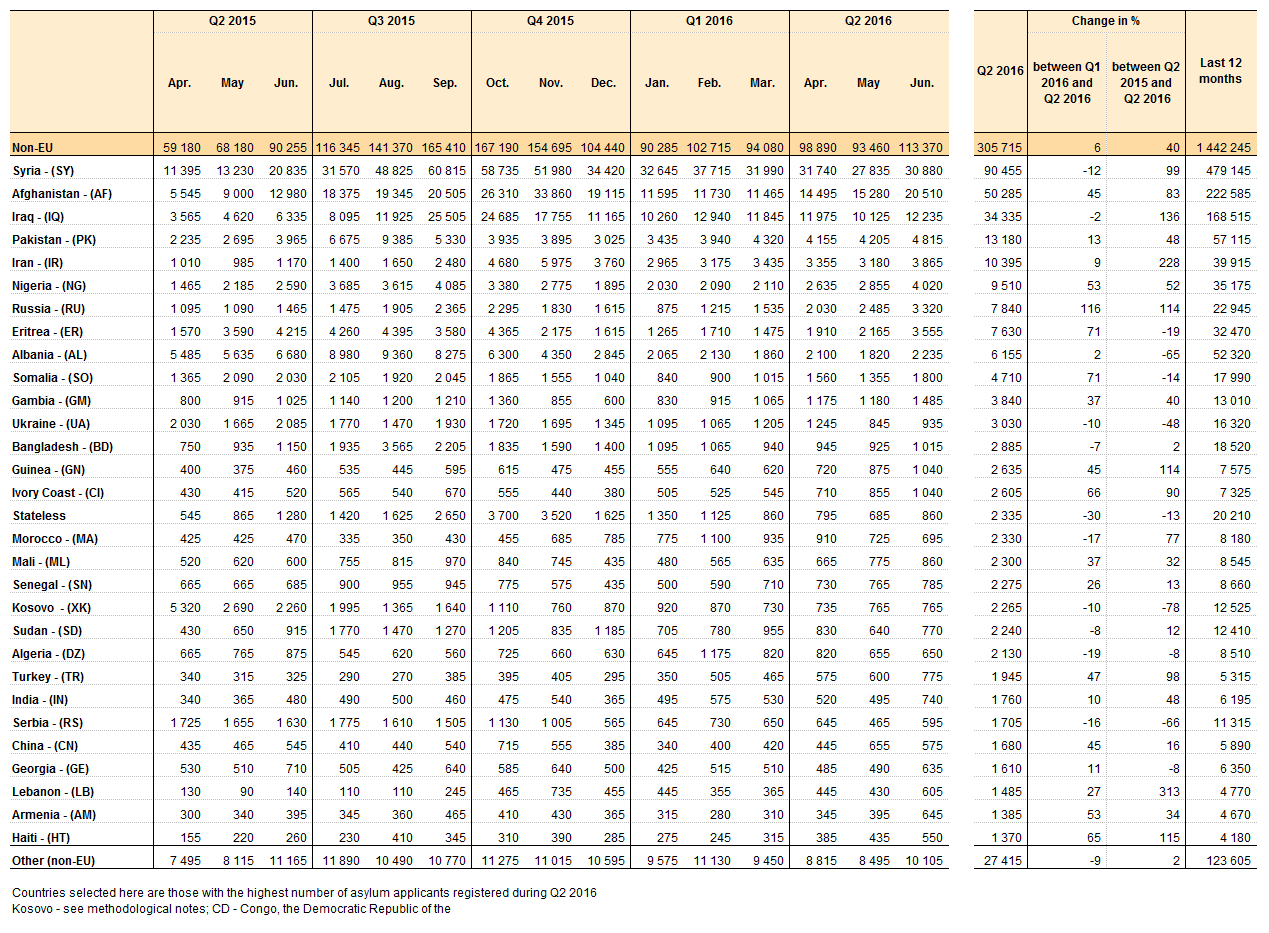In 2015 the vast majority of those applying for asylum in the EU were from war-torn regions like Syria, Afghanistan and Iraq
http://www.bbc.co.uk/news/world-europe-34131911
It is not clear which years these generals were referring to but it certainly looks like they are wrong.
Here is the source for this data:
Citizens of 148 countries sought asylum for the first time in the EU in the second quarter of 2016. Syrians, Afghanis and Iraqis were the top 3 citizenships of asylum seekers, lodging 90 500, 50 300 and 34 300 applications respectively (Table 1).

We could also look at data on illegal border crossings which are logged by Frontex (The EU's external border force). The three major migratory routes are from:
The central Mediterranean route (127,599 illegal crossings so far in 2016). These people mostly come from Nigeria, Eritrea and the Ivory Coast
The western Balkan route (121,712 illegal crossings so far in 2016). These people are mostly crossing over through Croatia and so will mostly come from war torn regions.
The eastern Mediterranean route (172,982 illegal crossings so far in 2016). These people mostly come from Syria, Afghanistan and the Iraq
This supports the data on asylum seekers and indicates that most immigrants these days are arriving from war torn regions of the Middle East.

